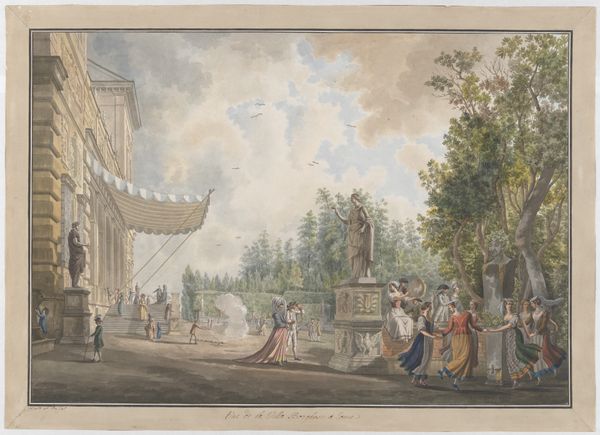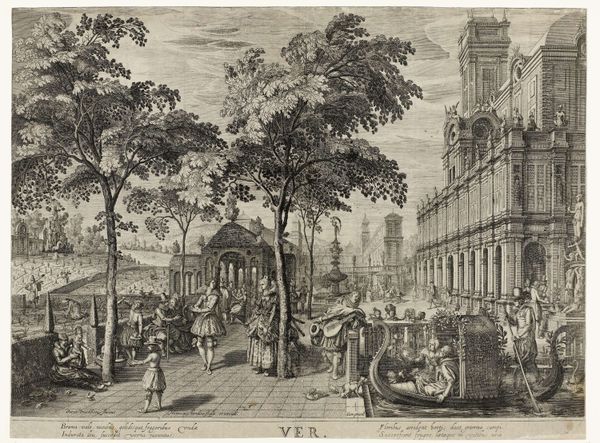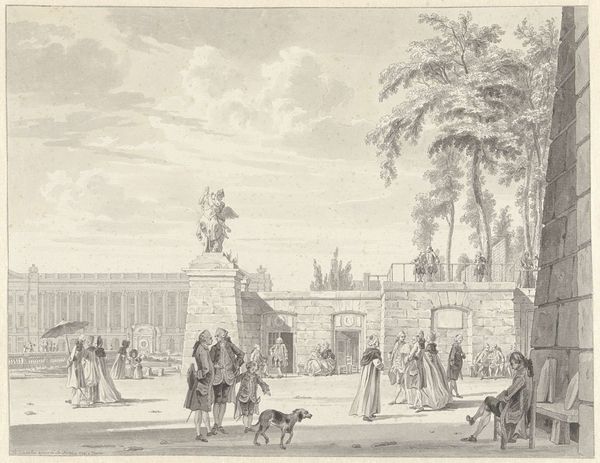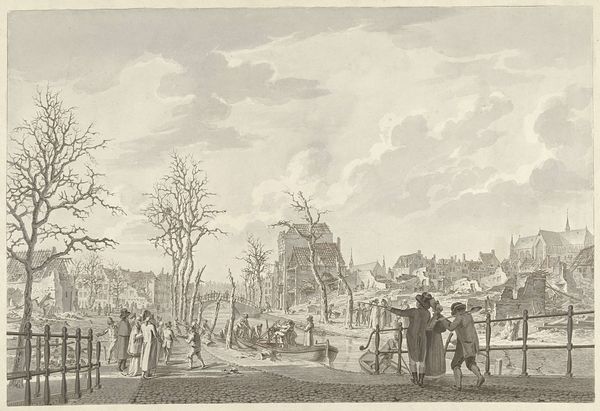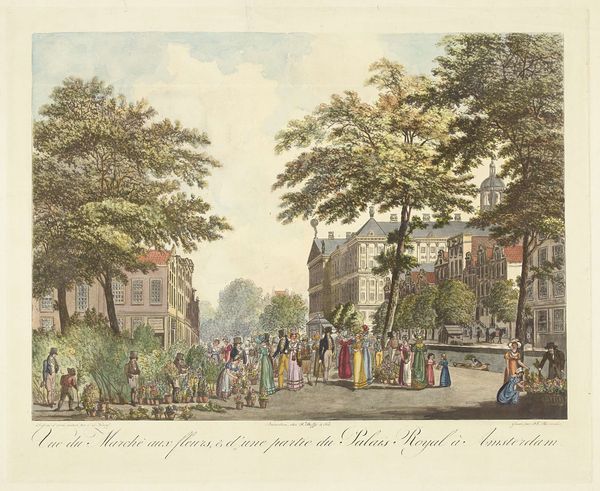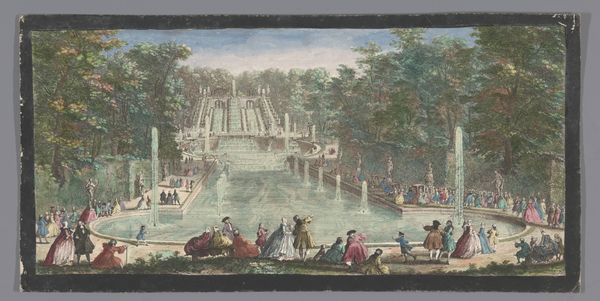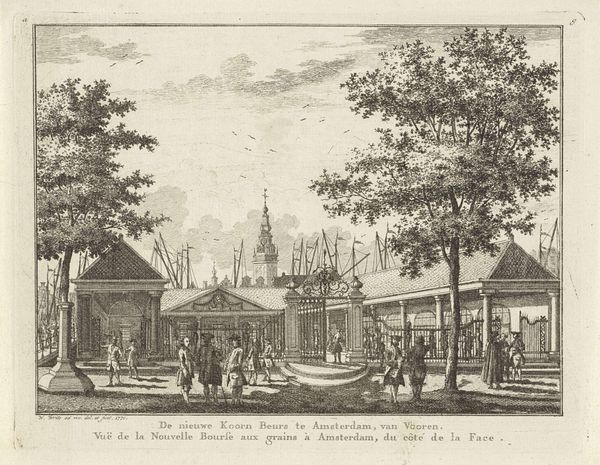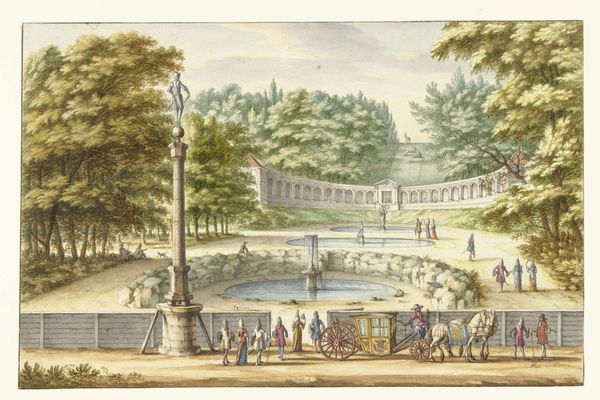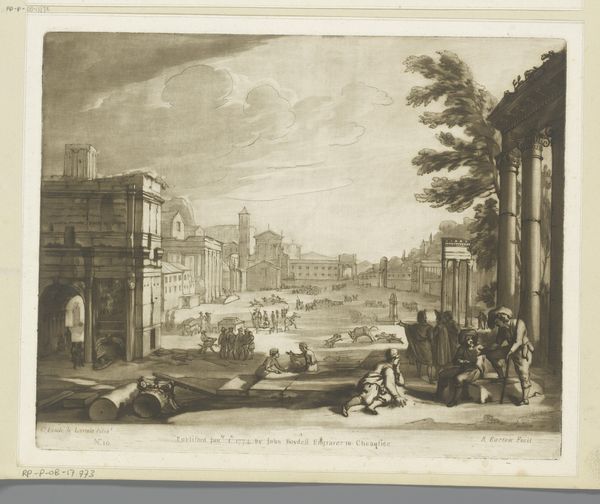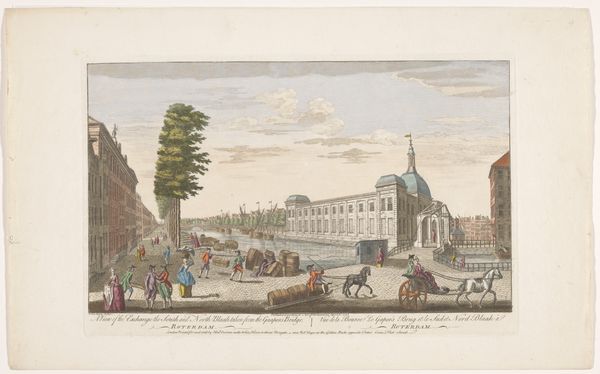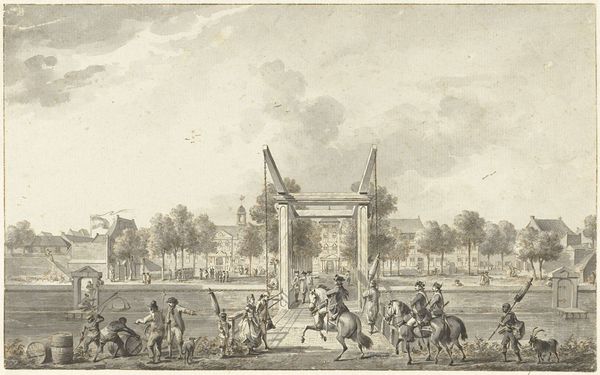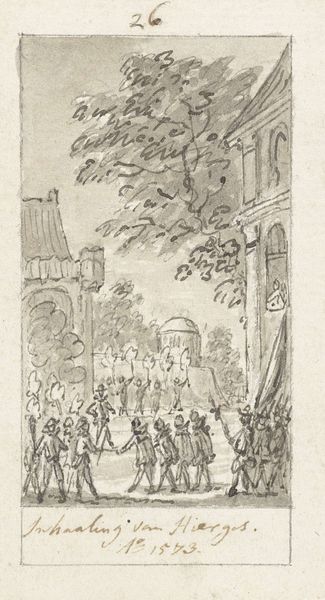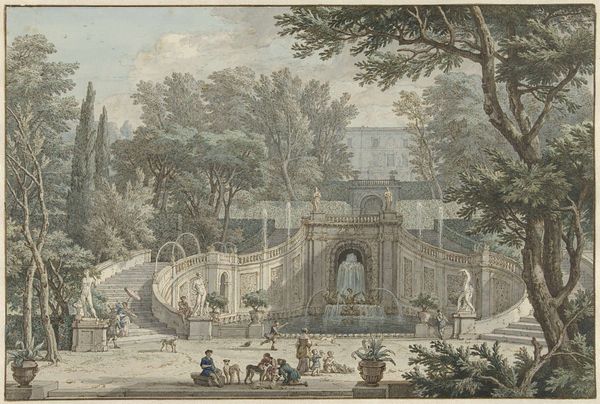
Gezicht op de Villa Borghese Pinciana en de Villa Borghese tuinen te Rome 1758 - 1803
0:00
0:00
plein-air, watercolor
#
neoclacissism
#
plein-air
#
landscape
#
watercolor
#
park
#
cityscape
#
watercolour illustration
#
genre-painting
#
watercolor
Dimensions: height 561 mm, width 792 mm
Copyright: Rijks Museum: Open Domain
Giovanni Volpato made this print of the Villa Borghese Pinciana and its gardens in Rome using etching and watercolor. It’s undated, but we can safely place it in the late eighteenth century. The image captures a slice of elite social life. We see fashionable people strolling, children playing, and a group dancing in a circle by a classical bust. What is most striking is the casual mixing of nature, art, and society. This mixing points to the status of the Villa Borghese as a kind of public museum, open to those who could appreciate it. Such institutions played an important role in the development of artistic taste and social norms. The Villa Borghese embodied the idea of art as a form of public education and moral refinement, intended to elevate the tastes and behaviors of the upper classes. To better understand this image, we might consult contemporary travel guides, social histories of Rome, and studies of the Borghese family. These resources would tell us about the political economy of art in eighteenth-century Italy.
Comments
No comments
Be the first to comment and join the conversation on the ultimate creative platform.
